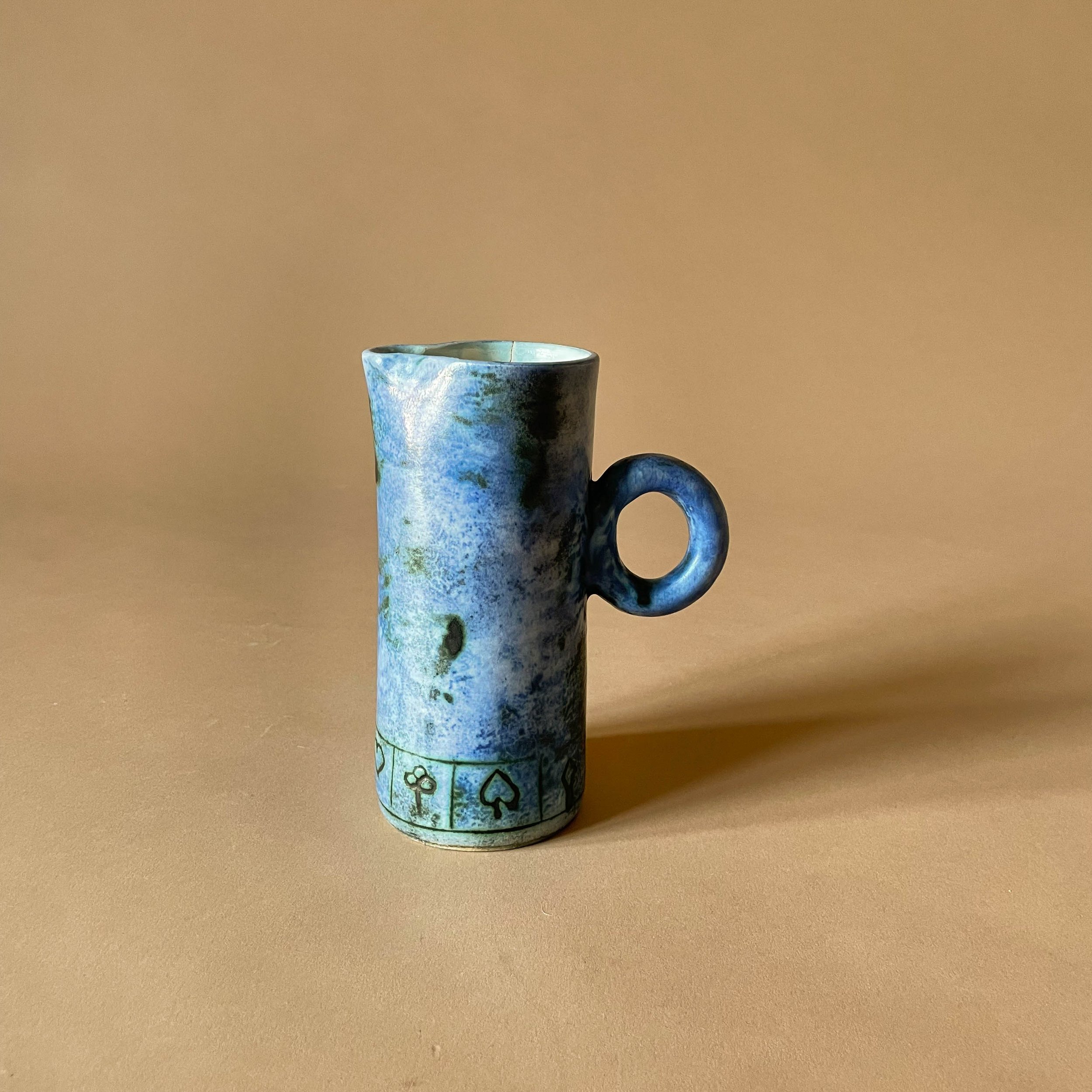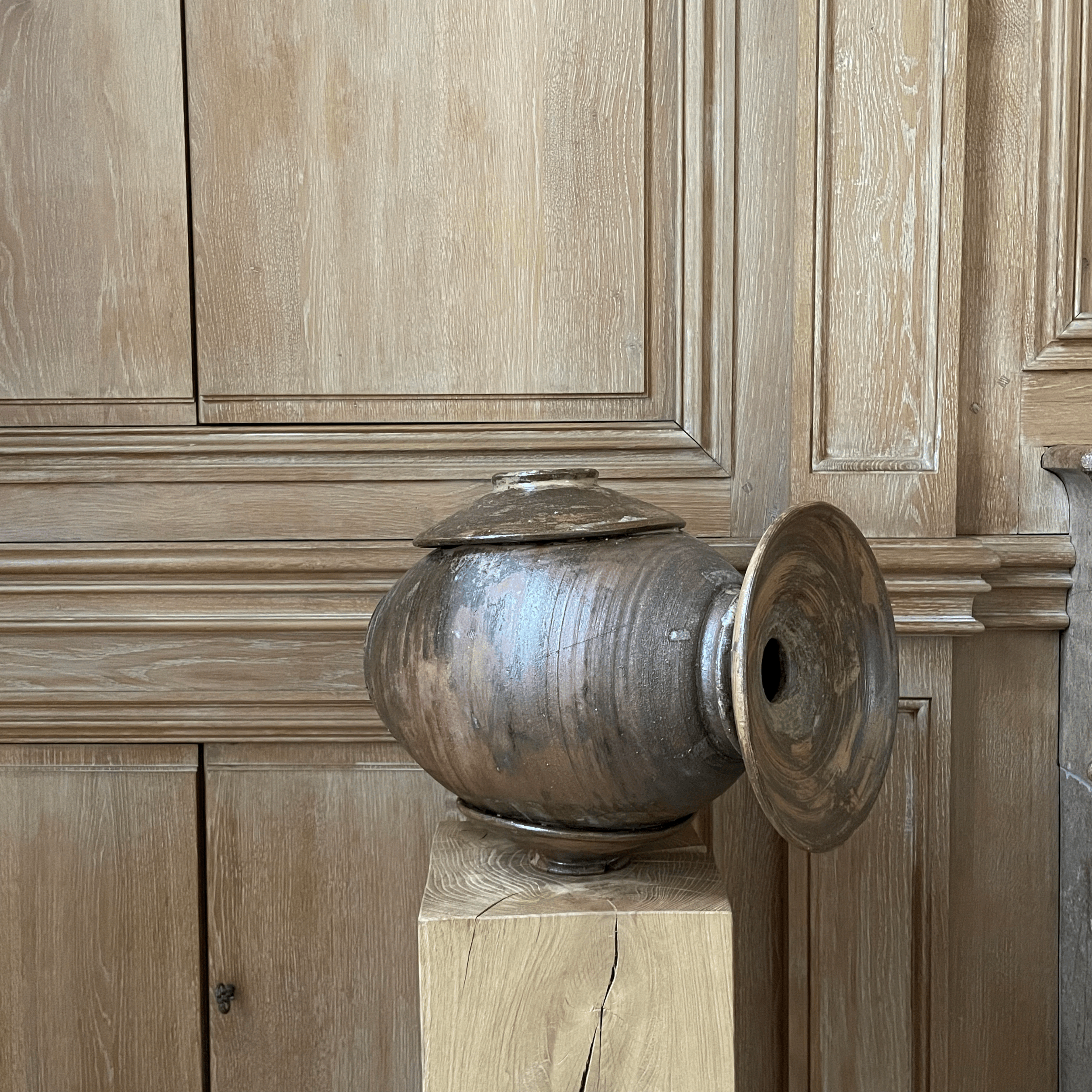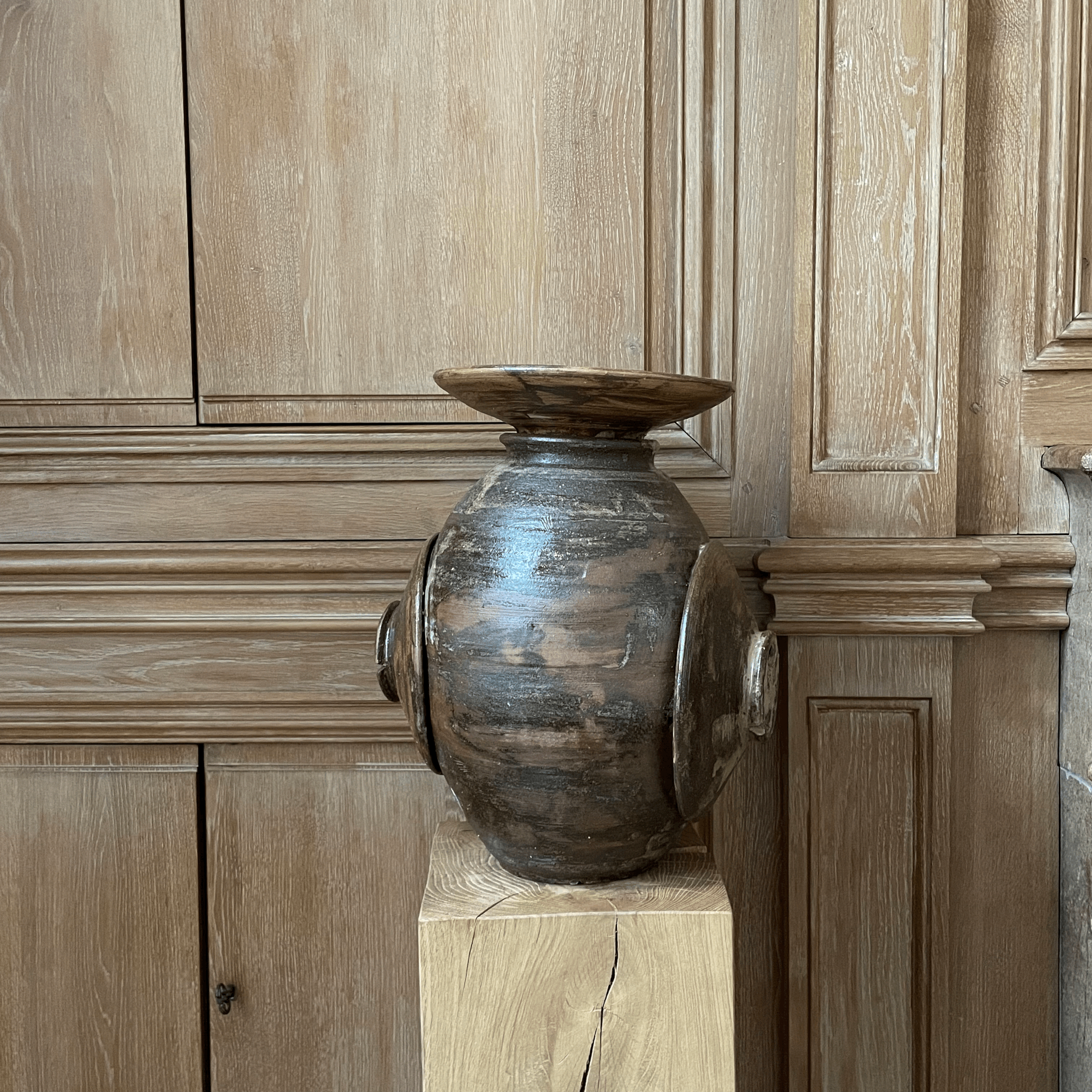Panier en bambou clair et otoshi laqué, Japon







Panier en bambou clair et otoshi laqué, Japon
Panier en bambou clair et otoshi laqué
Japon
Ère Showa
H 38 x L 23 x P 14,5 cm
Annotations sous le panier
Très bon état
Basket in clear bamboo and lacquered otoshi
Japan
Showa Era
H 38 x W 23 x D 14,5 cm
Annotations under the basket
Very good condition
À la fin de la période Edo, début Meiji, ce goût chinois et la culture bunjin en particulier devinrent très populaires à Osaka, centre de la cérémonie du thé, et à Kyoto, centre politique et culturel et cela favorisa le développement de la cérémonie du thé sencha qui mettait à l’honneur les objets chinois. Des artisans vanniers très expérimentés réalisèrent des paniers de bambou inspirés des modèles chinois en commençant par des reproductions serviles des grands classiques puis en initiant des variantes valorisant leur grand savoir-faire et leur inventivité. Cela conduisit à les identifier différemment, ils furent nommés kagoshi parce qu’ils se concentrèrent sur la production de pièces de leur création uniquement. Ainsi, ils commencèrent à présenter leurs pièces lors d’expositions internationales qui leur permirent de s’identifier peu à peu comme des artistes.
Durant la période Showa (1926-1989), le kogei obtint une véritable reconnaissance artistique grâce à la présentation de pièces dont l’expression individuelle des auteurs apparaissait.
Pour en savoir plus sur l’artisanat au Japon
At the end of the Edo period, beginning of the Meiji period, this Chinese taste and the bunjin culture in particular became very popular in Osaka, the centre of the tea ceremony, and in Kyoto, the political and cultural centre, and this favoured the development of the sencha tea ceremony which honoured Chinese objects. Very experienced basket makers made bamboo baskets inspired by Chinese models, starting with slavish reproductions of the great classics and then initiating variants that showcased their great skill and inventiveness. This led to them being identified differently, they were named kagoshi because they concentrated on producing pieces of their own creation only. Thus, they began to present their pieces at international exhibitions which allowed them to gradually identify themselves as artists.
During the Showa period (1926-1989), the kogei gained true artistic recognition through the presentation of pieces in which the individual expression of the authors appeared.










